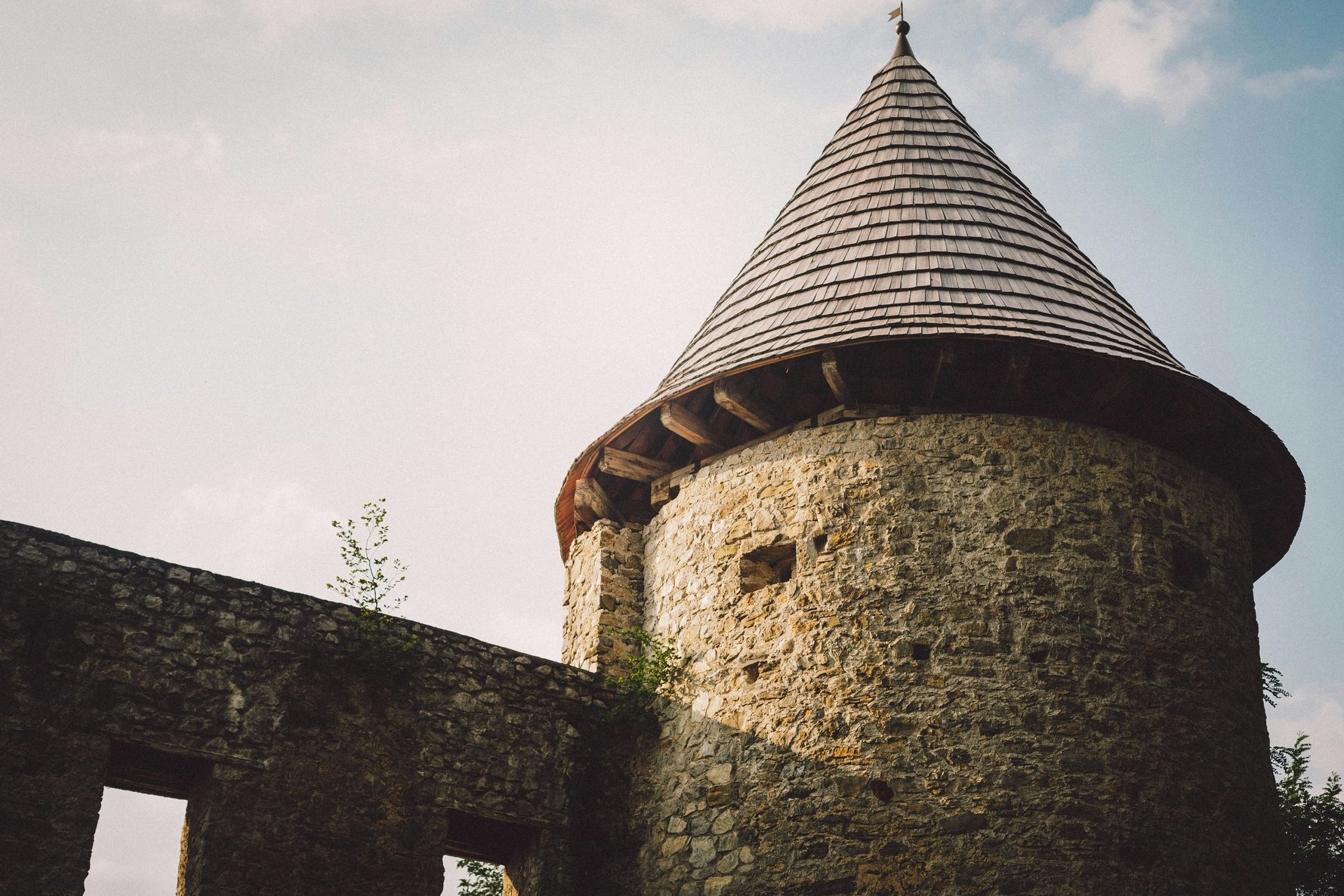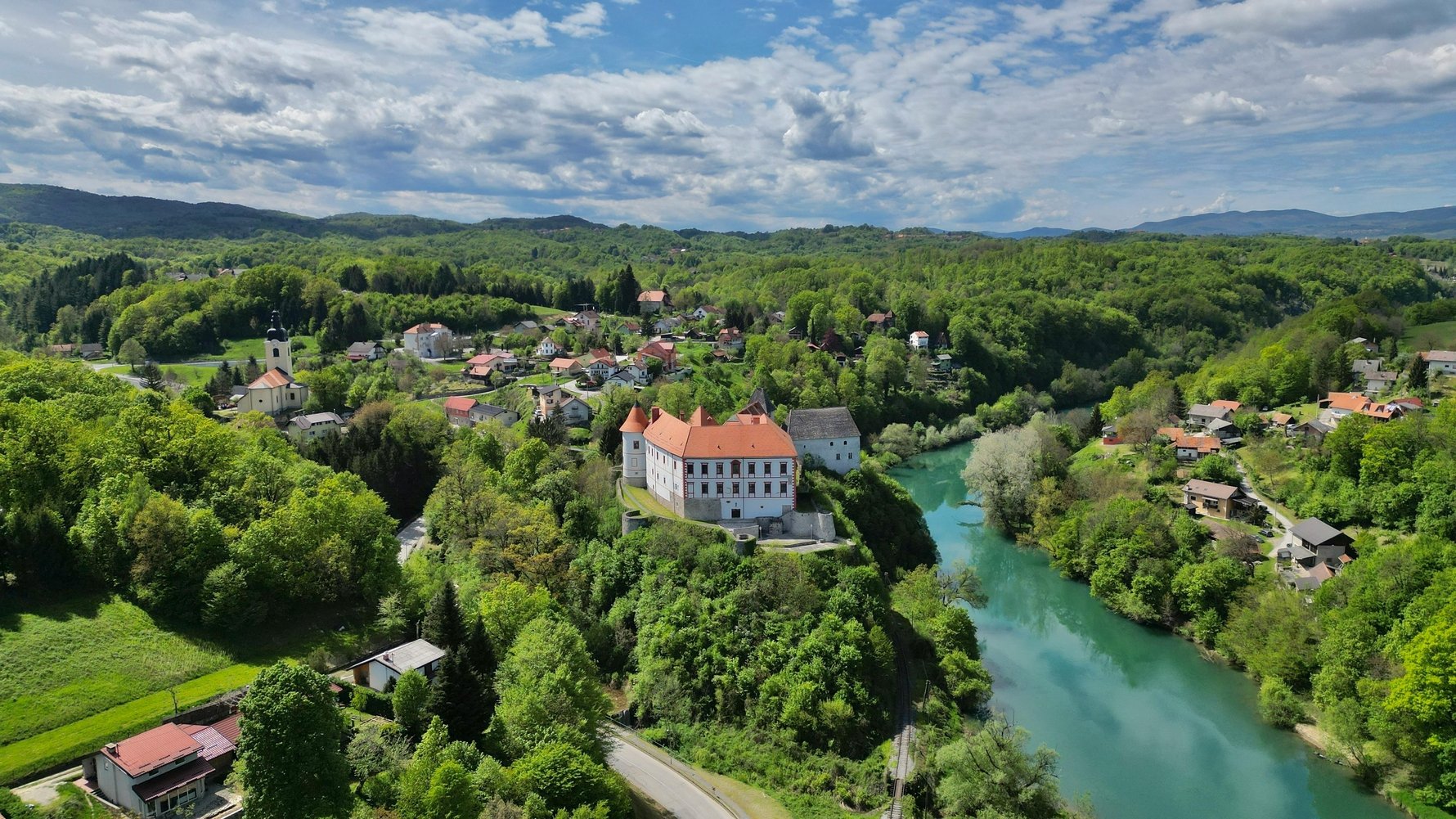These stone guardians of history whisper tales of knights, noble families, and battles long gone. Whether hidden in forests or perched above rivers, each ruin and restored stronghold invites you to imagine a world from centuries ago. They stand as silent witnesses to the region’s rich and layered past, offering a glimpse into Croatia’s medieval heritage.
Modruš
Anyone interested in seeing something truly historic and almost forgotten should head for Modruš, just off the Mala Kapela tunnel on the Zagreb-Split motorway, near the town of Josipdol. The remains of the old town, once a site of great importance, are perched on the peak of an almost conical hilltop with dizzyingly steep slopes. It is thought that the town came into being around 820 AD, around the time of battles between Prince Ljudevit Posavski of Pannonia and Prince Borna of Dalmatia, but grew into a centre of importance in the 12th century, when a gift of a fortified settlement was made to the town by Prince Bela of Hungary – at that time, the land was part of the Kingdom of Hungary – which was administered by the Croatian Count Bartol Frankopan with the task of overseeing the security of the road which passed at the foot of the hill, linking the interior with the coast. In 1460, Pope Pius II relocated the bishopric from nearby Krbava to Modruš, and the town reached its zenith. With repeated invasions by the Turks in the area from the 15th century onwards, Modruš was destroyed several times over, and the town became increasingly depopulated and its glory was dimmed. In World War Two, the job was almost completed, and only about 300 people reside there today, eking out a living in the harsh Lika countryside.If the isolated life of these survivors has brought one good thing, that’s the preservation of the natural landscape which provides a backdrop of lush forested hills to the unique hill. With picturesque rural architecture dotted around, it’s easy to see that this could make a delightful place for rural tourism. However, with money hard to come by, do be aware that not a great deal in the way of amenities has been set up – yet. What you will get is a stunning set of ruins and a rather lovely parish church in a very beautiful natural setting, and an opportunity to see the original culture of this region preserved in costume, dance and song, far from the tourist crowds. Enjoy it while you can.
Novigrad na Dobri
Along the path of the Dobra River and over an ancient stone bridge lie the fairytale ruins of Novigrad, a former important town. It is here that this old Church town (now called Novigrad) had a church, school, town hall which points to the administrative centre’s former significance. Mention of this town goes back to the 13th century, however, history passed through here continuously since medieval times, where evidence points to a fortified building and castle. What remains now besides the ruins is a restored tower that acts as a fine look out point. From here you can see well into the distance where your eye can follow the meandering lines of the Dobra River as it disappears into the lush green surrounds. The most significant period of Novigrad is tied to the period when it was under the possession of the Frankopan counts, going back to c.14th century until their reign ended c.1671. The city was then robbed and enslaved by the Baron Sauer of the Karlovac army, which was led by the General J.Herbstein. The city then falls under the possession of General J. Herbstein until 1689. Its ownership later changes many hands until the town experiences burning fires in World War II. From here on the building’s valuable stone is dismantled for other buildings. In 1999, at the initiative of the Friends of Novigrad and the Ministry of Culture, and with support from the City of Karlovac, the conservation and restoration of the main parts of the fort began. The works were completed in 2023, when the fort reopened its doors to the public.
Stone Bridge
The stone bridge that bends over the Dobra River is one of the oldest river bridges in Croatia. Its original date is unknown but it is known that it acted as a toll and this use is mentioned by Vuk Frankopan in 1560. So, the bridge has been in use for the past four centuries, however it is likely to have changed its look over the years. It current look is believed to go back to the early 18th century when the nearby Caroline road was built. The bridge has eight bricked arches, its length is 122metres and it virtually leads one up to the fort.
Ozalj
This little town lies close to the border with Slovenia, near the Dobra and Kupa rivers and close to lakes richly stocked with fish, protected by the serrated Žumberak mountains to the north, and surrounded by gentle hills and vineyards. At the centre of the little town stands, high on a limestone rock, Ozalj's castle, the symbol of the town. Founded in the 13th century and owned by successive Frankopan and Zrinski dukes, the castle grew into a small walled city. A newer part of town later grew up at the foot of the fort, but the overriding impression is a charming medieval one.Since it acted as a seat for these noble families, the town once had a far greater importance than you would think now, including a rich cultural and literary life based on the Kajkavian dialect. Ozalj has both a Native Museum and an Ethno Park, which are excellent for giving you an insight into this cultural past and into local traditions. The museum is where you can find everything from prehistoric remains to artefacts from the time of the noble families; from the military to the religious and spiritual life of the area. There’s also a collection of landscapes by local painter Slava Raškaj. The Ethno Park (actually the ethnographic department of the museum) is where you can see the heartbreakingly pretty thatched cottages typical of the area, and the simple but pristine, whitewashed and wooden interiors brightened with flashes of colour of handmade textiles.
In the Ozalj area there are numerous stately homes and palaces dotted around. One of the most surprising looks rather like a miniature English castle, lying right by a weir on the Kupa riverbank. This “Stone Palace” is, in fact, a hydro-electric power plant, dating back to 1908, one of the first in Croatia. Although it really did work, serving Karlovac with electricity, this neo-renaissance building is nowadays a listed monument. All in all, we vote Ozalj a great day out.






Comments